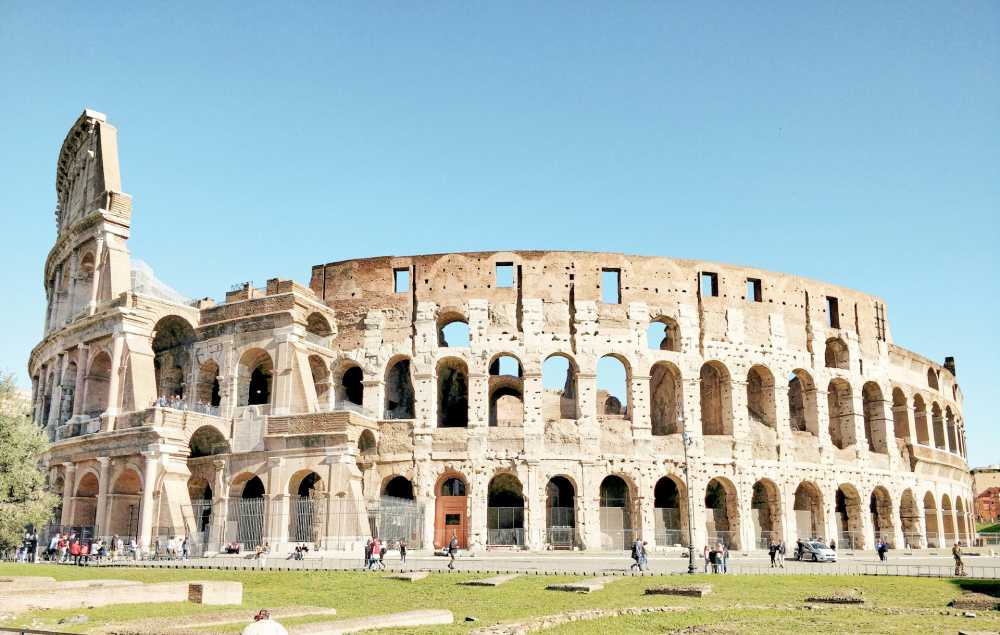Explore the Undiscovered Treasures Around the Colosseum
While the Colosseum itself is a marvel, there’s much more to explore in the surrounding area. Whether you’re on a Colosseum underground tour or just wandering nearby streets, hidden gems await.
These under-the-radar spots offer a deeper understanding of Rome’s rich history and vibrant culture. Imagine strolling through quiet gardens, discovering ancient ruins, and enjoying local cuisine—all within walking distance of one of the world’s most famous landmarks.
From hidden historical sites to cozy dining spots, this guide will take you through the lesser-known attractions around the Colosseum, helping you make the most of your visit. Whether you’re a history buff, a foodie, or just someone looking to see a different side of Rome, these tips and recommendations will enhance your experience.
Lesser-Known Historical Sites Near the Colosseum
Aventine Hill
Just a short walk from the Colosseum, Aventine Hill is a tranquil escape from the bustling city. Known for the famous Aventine Keyhole, this hill offers stunning views of Rome, allowing you to see the city from a unique, elevated perspective.
The keyhole itself is a tiny opening in a door that perfectly frames the dome of St. Peter’s Basilica in the distance. A stroll through the leafy, peaceful gardens presents a perfect backdrop for photos and quiet reflection. The hill is also home to several ancient churches and the Roseto Comunale, Rome’s rose garden, which is in full bloom in the spring season.
Basilica of San Clemente
This basilica is a fascinating multi-layered historical site. The 12th-century church you see above ground boasts stunning mosaics and frescoes, while below, you’ll uncover a 4th-century Christian basilica. Beneath that, you can explore a 1st-century Roman house and Mithraeum, a temple dedicated to the ancient god Mithras.
Each layer of the Basilica of San Clemente offers a captivating glimpse into different eras of Rome’s complex history, making it a must-visit for history enthusiasts. The site gives you a tangible sense of the city’s ability to build upon its past while continually evolving.
Ludus Magnus
Once the largest gladiatorial school in the Roman Empire, Ludus Magnus now serves as an intriguing archaeological site. Located just a stone’s throw from the Colosseum, the ruins reveal where gladiators trained and prepared for their brutal fights.
The remains of the training arena, barracks, and even an underground passage that led to the Colosseum itself can still be seen. A visit to Ludus Magnus provides a more intimate understanding of the lives of gladiators, complementing the grand spectacle of the Colosseum.
Off-the-Beaten-Path Attractions
The Baths of Caracalla
These ancient baths are an underrated site, offering a glimpse into the luxurious bathing culture of ancient Rome. Built in AD 216, the Baths of Caracalla could accommodate up to 1,600 bathers at once and featured a combination of hot, warm, and cold baths, along with gymnasiums, libraries, and gardens.
The massive structure, adorned with intricate mosaics and statues, is a testament to Roman engineering and social life. Walking through the ruins, it’s easy to imagine the grandeur and opulence that once characterized this public bathhouse.
Domus Aurea
Beneath the streets of Rome lie the ruins of Emperor Nero’s grand palace, Domus Aurea. This hidden treasure is an architectural marvel with intricate frescoes and spacious halls, providing a unique experience for history enthusiasts.
Constructed after the great fire of Rome in AD 64, the palace was once an opulent space filled with gold leaf, marble, and precious stones. Today, guided tours take you through the dimly lit underground chambers, offering a glimpse into the lavish lifestyle of one of Rome’s most infamous emperors.
Dining and Cafes to Try
Local Pizzerias
Near the Colosseum, you’ll find various authentic Roman-style pizza places. These eateries, often family-owned and cherished by locals, offer an unbeatable taste of Rome’s culinary scene. The thin, crispy crust of Roman pizza, topped with fresh ingredients, is a hit among both locals and tourists. Popular spots like Pizzeria Li Rioni and Trattoria Luzzi are perfect for enjoying a slice or two of delicious pizza.
Hidden Cafes
In quiet corners are some of the prettiest cafes, perfect for a quick espresso or a relaxing snack. These spots, often adorned with charming décor and offering outdoor seating, provide a serene escape from the tourist crowds. With a rich aroma of freshly brewed coffee filling the air, these hidden gems are ideal for a mid-day break.
Trattorias and Osterias
Try an authentic trattoria or osteria for a heartier lunch. These establishments serve up hearty Roman cuisine, offering dishes like cacio e pepe, carbonara, and saltimbocca that are sure to delight your taste buds.
Spots like Trattoria Monti and Osteria da Fortunata are known for their authentic flavors and warm, welcoming atmosphere. A dining experience at these places will leave you with a deeper appreciation for Roman culinary traditions.
Fascinating Facts About the Colosseum’s Neighborhood
Ancient Trade Routes
The area around the Colosseum was once a hub of ancient trade routes. These routes influenced the development of the neighborhood, contributing to its rich history and cultural diversity. Traders from different parts of the Roman Empire converged here, bringing with them goods, ideas, and cultural practices that shaped the area.
Architectural Styles
The neighborhood features a mix of ancient and modern architectural styles. From Roman ruins to Renaissance buildings, the area is a captivating blend of historical periods. As you walk through the streets, you’ll encounter structures that showcase the evolution of architectural designs over centuries, painting a vivid picture of Rome’s dynamic history.
Cultural Significance
The monuments and buildings around the Colosseum hold substantial cultural significance, reflecting Rome’s long and storied past. Each structure tells a part of the story of this ancient city. From the remnants of the Imperial Forums to the grand basilicas, the neighborhood is a testament to Rome’s cultural and historical depth.
Getting Around Efficiently
Public Transportation
Rome’s public transportation system is efficient and user-friendly. The metro and bus lines are the best ways to get around. For visitors, taking Line B to the Colosseum stop is the most direct way to reach the landmark. Tickets are cheaper and can be purchased at metro stations and newsstands. Also, consider using trams for a more scenic journey through the city.
Walking Tours
Self-guided walking tours are a great way to explore multiple attractions at your own pace. Armed with a good map and some comfortable shoes, you can cover a lot of ground while savoring the sights. Walking tours also offer the flexibility to linger longer at places that catch your interest. For a richer experience, consider downloading an audio guide that provides historical context as you explore.

